NauticalNotebook.com
© 2010-
Please contact us with any questions or comments
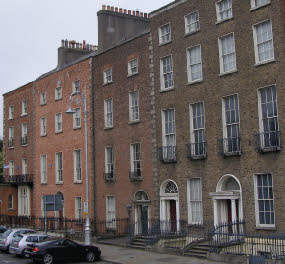
Port Review: Dublin, Ireland
July 11, 2009
8:00 am – 11:00 pm
By Lisa Plotnick
Located on the east coast of Ireland, Dublin is a popular port of call on British Isles cruises. With a population of 1.6 million and a history dating back several centuries, Ireland’s capital city is filled with a multitude of attractions, including museums, shops, pubs, parks, and varied architecture. This gives the cruise visitor a wide number of choices, yet also means that it’s difficult to do everything in one day. Therefore, advanced planning is recommended, whether doing a cruise line’s shore excursion or going out on your own.
We opted to tour Dublin independently, which turned out to be a great decision. There were several reasons that we went against our convention of using cruise line tours when visiting an area for the first time. First, we figured—correctly, as it turned out—that we would need a break from having to wake up very early as we had done each of the five mornings preceding this one. (And, the previous day’s tour was nearly nine hours long.) Additionally, we had a relatively long stay in Dublin (docking at 8:00 am and departing at 11:00 pm), giving us a large window in which to return to the ship and no need to concern ourselves with tenders. We are also very comfortable in large cities, and there were many books and online guides to help us prepare.
In the weeks leading up to the cruise, I researched tour companies, and came upon
the Dublin Bus Tour hop-
Our ship docked in an industrial part of town that was a bit of a distance from the main part of the city. The port provided a complimentary shuttle to downtown Dublin, near Trinity College, so we made that our first stop.
Trinity College, established in 1592, is Ireland’s oldest college and occupies more
than 40 acres. Its most famous draw is the Book of Kells, a lavishly decorated manuscript
circa the year 800 CE that contain the four Gospels of the New Testament. The Book
of Kells has been on display in Trinity College’s Old Library since the mid-
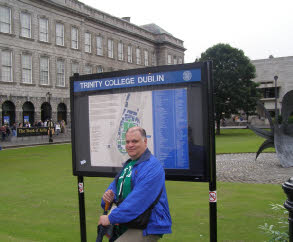

Many of the buildings were constructed in the mid-
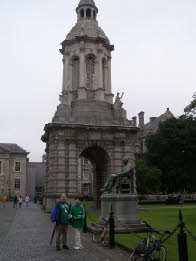

Another point of interest for us was the brass sculpture Sphere within Sphere, one
of many such works by Italian artist Arnaldo Pomodoro. In Dublin, it is positioned
alongside the 1967-
After taking in the cobblestoned grounds of Trinity College, we hopped on the tour
bus enroute to the Dublin Zoo, nestled within the 1,730-

Phoenix Park was a beautiful respite from the main part of the city. The park contains a variety of plants, flowers and trees—we noted a maple tree and a variety of palm tree. Our guide from our prior day’s tour in Northern Ireland told us that the latter can grow here despite the 55°N latitude as the weather is so temperate. This is a wonderful place for a stroll.

The Dublin Zoo was lovely. Opened in 1830, it focuses on education and conservation,
with emphasis on rare and endangered animals. The Dublin Zoo is home to nearly 600
animals representing roughly 100 species. Habitat areas included World of Cats, Fringes
of the Arctic, World of Primates, and an enormous African Plains. Among the critically
endangered species to which we were drawn were the Sumatran tiger (Indonesia), Amur
tiger (Russia/China/Korea), and the western lowland gorilla (lowlands of western
and central Africa). One interesting find was the scimitar-
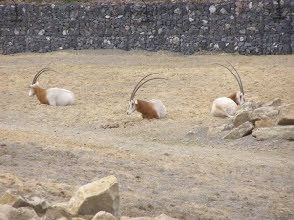
My favorite was a Bornean orangutan (Borneo, endangered) who posed patiently as if
he knew his photograph was being taken by a dozen visitors. Males can grow to 75-
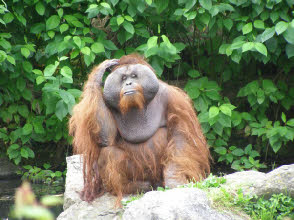

All in all, it was a marvelous day on our own in Dublin. The weather was in the mid-
Dublin, Ireland




